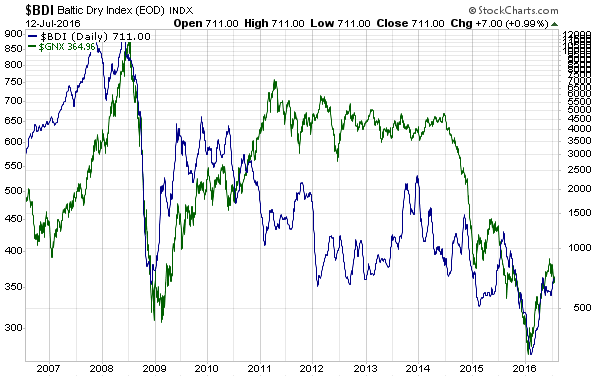When the Baltic Dry Index (BDI), an index of international ocean-going freight rates, plunged to a multi-decade low early this year it provoked excited commentary from the “economic armageddon is nigh!” crowd. An example can be found HERE. However, bearish commentary is unhelpful after the prices of useful things have fallen to the point where the suppliers of these things are financially in dire straits.
There’s always a risk that the stock price of an individual company will go to zero, but there’s never a risk that freight rates or the prices of useful commodities will go to zero. Therefore, the further they move into an area where they are low by historical standards, the lower the downside risk will generally be.
I’m lumping ocean-going shipping rates and commodity prices together in this post because they are linked. They usually trend in the same direction and reach important peaks/troughs at around the same time. A consequence is that it doesn’t make sense to be bullish on commodities and at the same time anticipating a large decline in shipping rates, or bearish on commodities and at the same time anticipating strength in shipping rates. For example, after commodity prices reversed upward during January-February of this year it made no sense to expect a continuing downward trend in shipping rates.
The link between shipping rates (as represented by the BDI) and commodity prices (as represented by the Goldman Sachs Spot Commodity Index – GNX) is illustrated below. The two indexes have been positively correlated for a long time. Divergences are not uncommon, but the divergences are always short-term.
So, here’s an idea: Rather than piling onto the bearish bandwagon, when the real price of an indispensable service or commodity drops to a multi-decade low it might make more sense to be bullish.
 Print This Post
Print This Post

